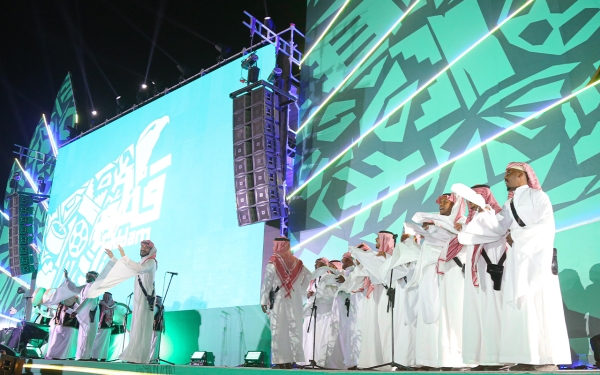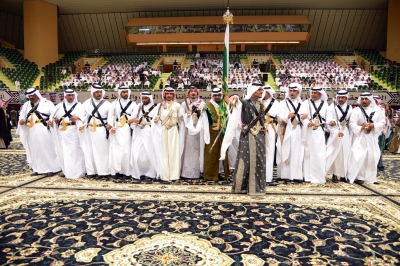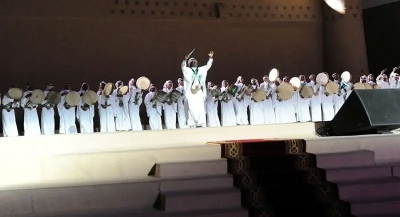
Samri Dance is among the folk arts in the Kingdom of Saudi Arabia. Folk dances are described as a deep heritage that tells the story of the past and its authenticity. They vary from one region to another within the Kingdom. The word samri is derived from the Arabic term 'samar,' signifying spending the night accompanied by a specific form of entertainment and art that delights the listener, with performers dancing to the beat of drums.
The Samri, Heda'a, and al- Mashoub are known as forms of folk music. In the same context, Samri of Unaizah, al-Wadi, al-Aarid, and Hail are among the most popular variations of Samri.
Characteristics of Samri
Samri art involves singing folk tunes that are embraced by everyone, especially since drum beats and distinctive dances accompany them. Two rows of men kneel and sway harmoniously toward cardinal points, clapping to the beat. Occasionally, some performers may move through the rows, and engage in reciting certain verses of poetry.
Origin of Samri
Samri originated in al-Qassim and spread to Hail, Wadi al-Dawasir, Bisha, al-Aarid, and the southern regions of Riyadh. Samri of Unaizah is considered one of the popular forms that attracts a large number of fans and followers, distinguishing itself from other forms of folk music in the Kingdom. Two Samri events are held in Unaizah each week. One is performed by a group of young people who participate in the Kingdom's celebrations and Arab festivals, while the other is led by a group of elderly Samri enthusiasts united by their love for this form of art. Additionally, two Samri evenings take place every weekend on two different days.
Samri of al-Jawf is typically performed on occasions and during wedding ceremonies. Two rows of participants face each other, taking turns to strike the tambourine. The poet recites the verses loudly, and the two rows echo the verses. The striking of tambourines resumes after the poet delivers the second part of the poem, following this pattern until the poem's conclusion Samri of al-Jawf is distinguished by the tawreed game, a unique feature of the region.
Samri dance in folklore
Samri dance is classified as intangible heritage within the folklore category in the national cultural competitions organized by the Saudi Ministry of Culture. In 2019, the ministry launched a competition offering monetary prizes, where various popular arts, including samri, heda'a, and al-Mashoub, competed within the folk dance category.
Samri art is one of the most present in official celebrations of the National Day in the Kingdom, as well as in national festivals, performance competitions of folk arts at Souq Okaz, and the Jenadriyah National Festival of Heritage and Culture.
Related quizzes
Related articles


